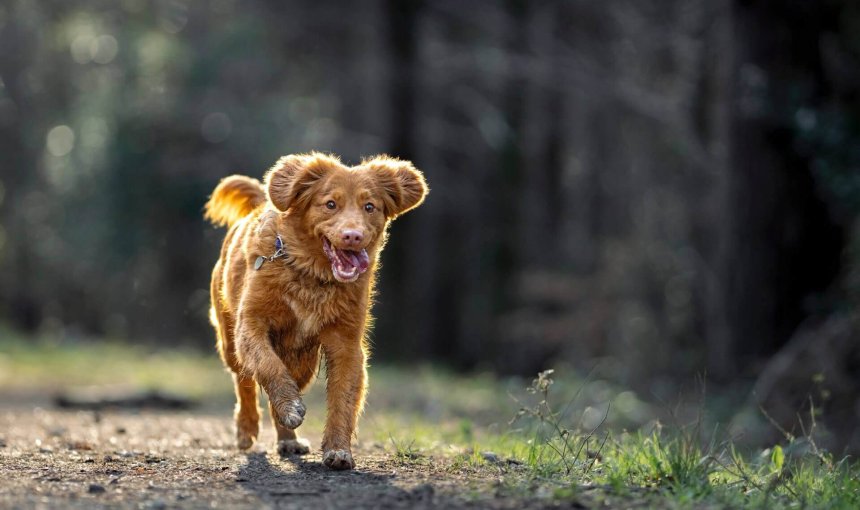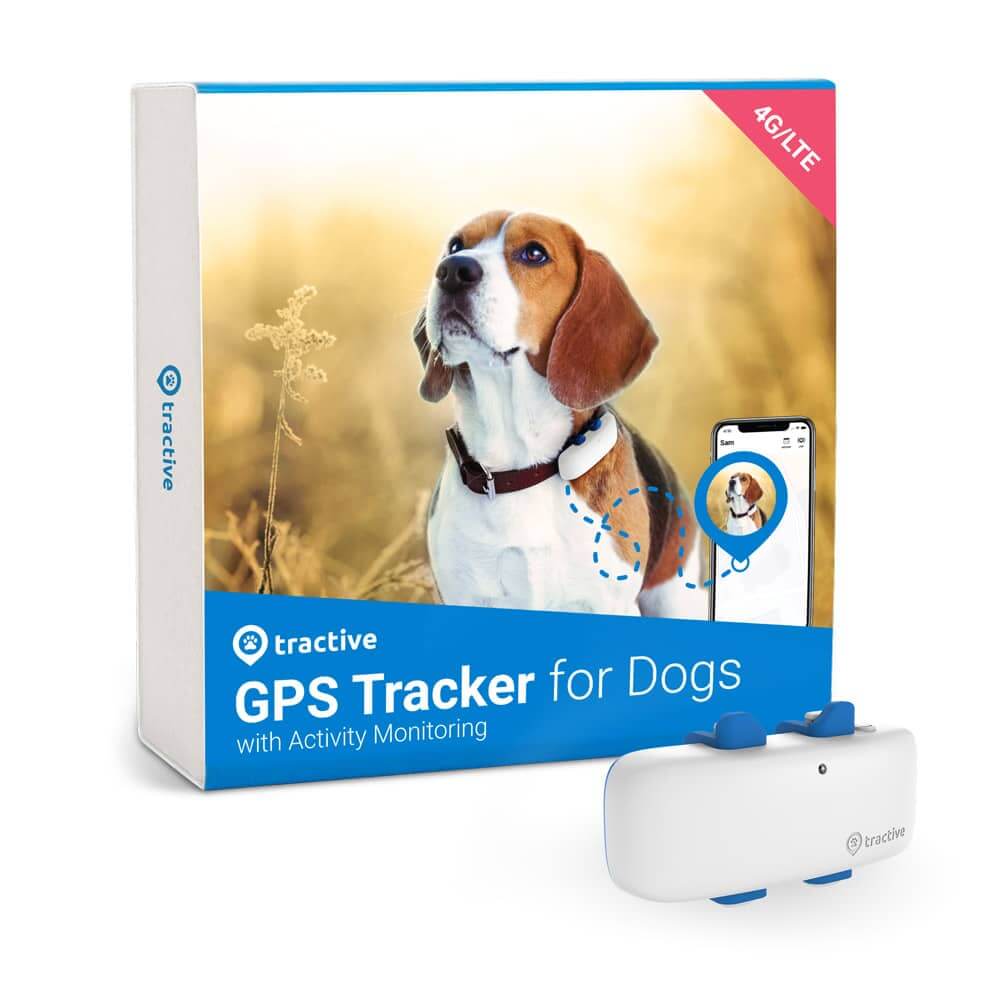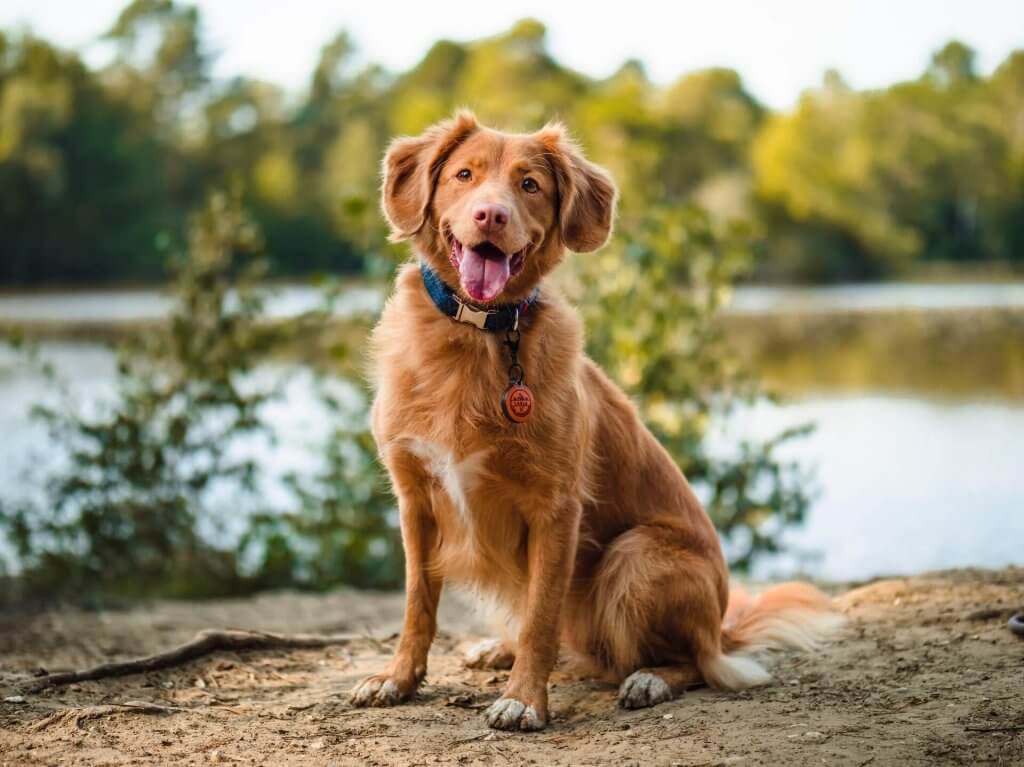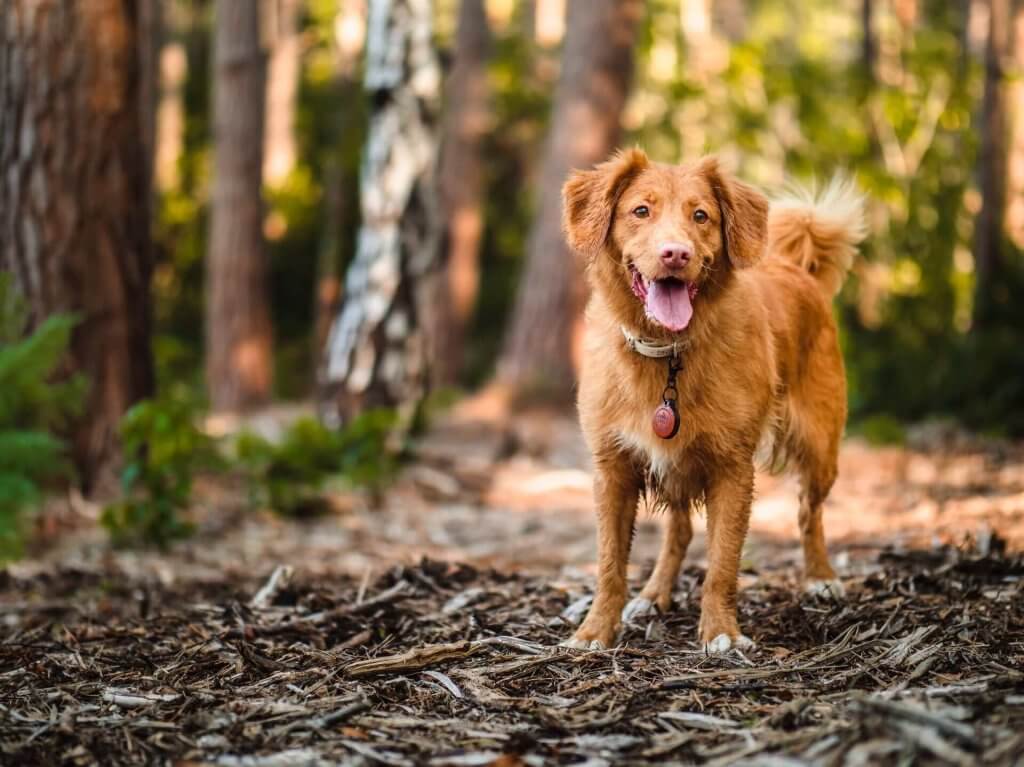The Complete Guide To Off Leash Dog Training
Running untethered with the wind in their fur is a dream come true for many dogs. But allowing your dog off leash can be risky. Do your homework before unclipping the leash to ensure the safety of your dog, other people, and other dogs.

Learning how to leash train your dog is an important part of every dog parent’s journey. When your dog knows how to walk nicely on the leash next to you, not only is it helpful – it’s the law in many areas.
But what about when you want to give your dog some freedom to run around and just be a dog? Like us, dogs need some time to stretch their legs unrestricted, too. In many cases, with guidance and supervision, we can train our dog to be off leash safely. Where it’s legal, of course.
In this guide to off leash dog training, you’ll learn how to train your dog to go off leash, plus how to make sure your off leash adventures are safe for you and your dog, as well as everyone else you encounter.
Pro Tip: Keep a GPS dog tracker on your dog whether on the leash or not – so you can see everywhere your dog goes.

Always know where your dog is
Follow every step in real-time with unlimited range. Get alerts if they wander too far. Keep them in shape with Activity Monitoring. And let others – like walkers or sitters – keep an eye on your dog too.
- What is off leash dog training?
- Best dog breeds to train off leash
- How to tell if your dog is ready for off leash
- Think about the risks
- Understand leash laws
- Off leash dog training process
- The basics of off leash dog training
- Basic commands off leash dogs should know
- What to do if your dog starts to run away
- The joy of off leash dog life
What is off leash dog training?
Your dog is off leash anytime they are unclipped from their tether. This may occur when you are walking, hiking, camping, at a nature park, or other unfenced area.
Off leash dog training is essential before you take your dog off leash in any of these situations. Off leash training is not the same as obedience skills, although basic obedience skills are the foundation of off leash training.
Best dog breeds to train off leash
Every dog’s personality is different, even within a specific breed. Dogs that are bred for hunting, such as Retrievers and Spaniels, are often highly trainable. This makes them good choices for off leash activities. When working on a hunt, these dogs run off leash to track or retrieve prey and return directly to their pet parent. These breeds are also good candidates for becoming therapy dogs.
If you plan to take your pup on wilderness hikes, camping, hunting, therapy, or other off leash pursuits, research breeds with the appropriate characteristics before you adopt a dog or purchase a new puppy.
Camping With Your Dog: Best Tips for a Fun Camping Experience
Depending on the dog’s personality, these breeds are potential off leash companions:
- Border Collie
- Labrador Retriever
- Golden Retriever
- Australian Shepherd
- German Shorthaired Pointers
On the other hand, dogs with a super-strong prey drive, such as Siberian Huskies, Shiba Inus, Rhodesian Ridgebacks, or Coonhounds may not be good candidates for off-leash activities.
Dogs with aggressive tendencies may have the right disposition for going off-leash. It doesn’t mean you can’t try, but depending on your dog’s personality, you will have your work cut out for you. Always do your research!
How to tell if your dog is ready for off leash
You can’t turn an apartment-dwelling pup into a trusted off leash companion overnight. Off leash dog training is challenging and time-consuming. Training your pup can take weeks or months. And training never really ends – you have to practice continually to make good behavior the norm.
Before you begin off leash training, assess your dog’s personality:
- Does your dog respond well to basic obedience training?
- Does your dog have good impulse control? For example, when they see a squirrel, can they resist the urge to chase after it?
- Does your dog interact well with strangers, including other dogs and small children?
- Your dog has no history of running off in the past or getting lost?
Also review some logistical concerns:
- Is your dog spayed or neutered? The canine mating urge is powerful and can cause your dog to run after another dog.
- Is your dog microchipped and wearing ID tags?
- Are your dog’s vaccinations and flea/tick prevention up to date?
- Are you familiar with the leash laws in your area?
If you can answer and enthusiastic “YES!” to all of these questions, you and your dog may be ready to start off leash training.
Think about the risks
Before you begin off leash dog training, think about the risks that you and your dog may encounter when your dog is running freely without a leash.
Allowing your dog to run off leash increases the chance that they will run away. Your dog could get spooked by almost anything and suddenly bolt. Without a leash, you have only voice commands to stop or recall your pup.
When off leash, your dog may encounter hazards such as getting hit by a car, tangling with other dogs or wildlife, getting lost, or ingesting something toxic.
A loose dog is at risk of hurting people or animals. They might get into a fight with another dog, bite a person, or dash in front of a cyclist and cause an accident. You might know your dog, but you can’t predict the million other situations that could happen while your dog is running free. Are you prepared for the liability that could result?
Toxic to Dogs: Dog Parents Beware of These Common Dog Poisons
You might revel in the sight of your dog running free, but not everyone will agree with you. Some people are afraid of dogs and will not appreciate being run at by your enthusiastic pup. Even if you shout “Don’t worry, she’s friendly!” your dog’s actions might seem aggressive and terrify an innocent hiker who has every right to be on the trail undisturbed. Always assess your environment and be aware that your dog can affect other people.
Understand leash laws
Everyone, even dog lovers, gets distressed when they see a big pooch running randomly through the neighborhood, zig-zagging back and forth across the street. Many states have laws that prohibit dogs from roaming unrestrained like this.
Many cities and towns have passed their own ordinances that may be more restrictive than state laws. These local laws may require that a dog must be “under control” – not specifically on a leash, but under the control of their pet parent. Other municipalities have specific leash laws. Some locations, such as city parks, may require that dogs be on a leash no longer than 6 feet long. Violators can be fined.
The bottom line is, laws differ from place to place. Know the leash laws in your area, or any place that you plan to visit with your pup.
Off leash dog training process
You and your dog are ready to start off leash training. Here are some tips to get started.
Be calm and assertive
When training your pup to go off leash, it’s important for you to take the leadership role. YOU are in charge. This works because dogs are pack animals who look to the alpha dog (that’s you) for cues on what to do and when to do it. Dogs are very comfortable following the lead of their alpha dog – it’s instinctual. If you allow your dog to become the alpha, you will not be able to train them effectively.
Start with training obedient behavior
Before beginning to train your dog to go off leash, your dog should be proficient in obeying basic commands, including:
- Sit – your dog stops what they are doing and sits, looking at you attentively
- Stay – your dog stays in place, even if there is chaos around them
- Down – you dog lays down at your feet
- Go – your dog moves to a specific place, like their bed or crate
- Heel – your dog walks beside you, not in front or behind you
- Recall – your dog comes to you when called
These behaviors are usually taught with voice commands, but you can also incorporate hand signals, whistles, or use a clicker. Reward your pup with treats or a good ear rub to cement the learning process. Include a 10-minute training session in your dog’s daily routine, which is good for your dog’s mental health.

How to Keep Your Dog Mentally Active
If you have trouble training your pup at basic obedience, hire a professional dog trainer or research training videos online. Don’t start off leash training until your dog has mastered basic obedience.
Your goal is to be a patient, calm, assertive leader that maintains control over your dog’s behavior, and can rein them in case something unexpected happens.
The basics of off leash dog training
Off leash training is an extension of basic obedience. It requires you to completely trust your dog in any situation.
Use a Long Leash
Before ditching the leash entirely, attach a long or retractable leash to your dog’s harness and head outdoors. The long leash will let your pup enjoy a bit of freedom. As your dog roams about, use basic commands to get your pup to heel, recall, or look at you. Do this repeatedly during your walks. Have treats ready in your pocket.
After a few outings on the long leash, assess whether your dog can be trusted to go fully off leash. If your pooch doesn’t acknowledge your commands because they are too wrapped up in exploring, you have more work to do before going off leash.
Test going off leash in a safe place
If your pup seems ready to go off leash, practice in your back yard or a fenced location first. Unclip the leash, be confident and assertive, issue frequent commands, and reward your dog with lots of praise when they obey.
Repeat this exercise again the next day, but this time invite family members or friends to provide distraction. Again, focus on issuing commands and pay close attention to your pup. If all goes well after a few sessions, your dog may be ready for the real thing!
Going off leash in a public place for the first time
We don’t recommend visiting a busy city park for your dog’s first off leash experience. There are too many distractions and risks. Instead, head to a quiet natural area with few people. Bring treats and a leash, just in case. Keep the session short and end with a successful recall.
The Guide to Leash Training a Puppy or Dog
Regular, automatic check-ins
Whenever you are out with your dog off leash, practice regular, automatic check-ins with your pup. Every few minutes, call them to your side and reward them with a treat or “good dog.” Continually reinforce this habit so you’ll be ready for any situation.
Emergency sits and downs
Along with check-ins, practice emergency sits and downs. Try these commands both when your dog is nearby and when they have run ahead. For example, if a horse and rider are approaching on the trail, recall your dog or tell them to sit until the horse has passed or you arrive at their side. Don’t chase after your dog – they may get excited or run farther away.
Motivate with treats – make them visible
Treats are a huge motivator. If you use treats for training, always bring some on your off leash outings. When your dog is close by and you need their attention, take a few out and hold them in your hand where the dog can see them. In case your pup is farther away, crinkle the bag and they’ll know right away that treats are an option.
Basic commands off leash dogs should know
In addition to basic obedience, off leash dogs must know some additional safety behaviors. Mastering these behaviors can keep your dog out of precarious situations, such as an encounter with wild animals, chewing on an undesirable item such as a dead animal, or walking on a pond covered with thin ice. Practice these daily.
- Emergency recall – a backup in case your dog fails to recall the first time
- Look – the dog looks at whatever you want them to look at, usually at you
- Drop it – your dog releases an object from their mouth
- Leave it – your dog walks away from an object or a chase

What to do if your dog starts to run away
Dogs have a mind of their own, and no amount of training can guarantee that your off leash dog won’t run away. What should you do if your pup dashes off to chase a squirrel and doesn’t return? Now is the time to put all that training to use.
Know your dog’s location in real time with Tractive GPS
Stay calm
Remember, you are the alpha dog. Remain calm and assert your leadership by calling to your pup in a firm, even tone. Try not to sound angry or fearful.
Don’t chase
Avoid chasing after your pup. This could backfire and make them think you want to play, so they’ll run faster. Face it, you will never catch them by running. Your best bet is to stick with what you’ve trained your dog to do – come back to you.
Show them the treats
Take out the treats from your pocket and let your dog see them. Rustle the treat bag to get their attention.
Turn away
Turn your back and walk in the opposite direction while recalling your pup. They may get curious and trot over to see you.
The joy of off leash dog life
Allowing your dog to run safely off leash can be rewarding for you and your furry friend. Your pup will get some great exercise (and so will you!).
Best of all, the time you spend training and reviewing basic commands will build a strong, lifelong bond between you and your dog. This is the best reward of all!




